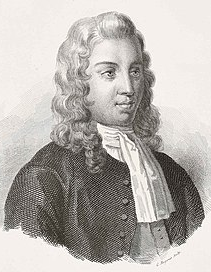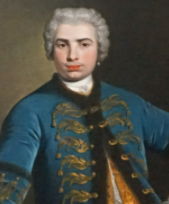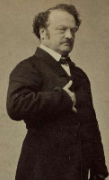“Bel Canto” is an italian term that literally translates to “Beautiful Singing”. Before indicating a “school” of singing, it was a term associated with a way of singing, originated in Italy from the eighteenth century, which emphasized the beauty of the sound and the brilliance of the performance at the expense of dramatic expression.

Image source: https://commons.wikimedia.org/wiki/File:Nicola_Porpora.jpg
Bel Canto
The development of the first principles of “Bel Canto” are to be attributed to the singing teachers among whom Antonio Bernacchi and Nicola Porpora stand out; but the one who is considered the initiator of this method is Giulio Caccini, who defined the characteristic institutions of “Bel Canto”: the aria for solo voice and the recitative style. The virtuosistic nature of this “school” was combined with a cruel custom still widespread at the time, namely that of castration. The unparalleled skills of these singers will eventually define some of the most important aspects of “Bel Canto”.

Image Source: https://commons.wikimedia.org/wiki/File:Portrait_de_Farinelli_par_Bartolomeo_Nazari_(Grand_Palais,_Paris)_(43278414240).jpg
The pedagogy of “Bel Canto” required an assiduous dedication and continuous practice of breathing exercises in order to be able to flawlessly achieve the “passaggio” between the “chest register” and the “voice register”. The teachers of the time preferred the exercise of vocalizations and solfeggio in an attempt to strengthen the respiratory muscles and vocal attributes of their students. General features of the “Bel Canto” style were the use of legato and staccato techniques, an articulated manner of phrasing, alteration of tempo through rhythmic rubato and vibrato as an emphasizer of longer notes.
At the beginning of the eighteenth century three composers dominated the Italian opera, namely the opera of “Bel Canto”: Rossini, Donizetti and Bellini. In their works it was the singers and singing that mattered. This music openly aimed to put on a show. Their art was sentimental and exhibitionistic and had a popularity that in the case of some works, such as “The Barber of Seville” by Rossini, “Lucia di Lammermoor”, “Don Pasquale” and “L’Elisir d’amore” by Donizetti and Bellini’s “la Norma” has overcome the challenge of time. But precisely this exhibitionistic nature will not survive the advent of the deep and reflective dramas of early Romanticism paired with the gradual disappearance of castrati singers.

Image source: https://picryl.com/media/portrait-de-gilbert-louis-duprez-1806-1896-chanteur-lyrique-e70d02
Since this style favored the search for a lighter and more penetrating sound, the first romantic operas proved to be the beginning of the end for “Bel Canto”. As the voices grew weightier, the public began to develop a taste for operas that were increasingly full of drama, power and intensity. An example of this change of tendencies is the tenor Gilbert Duprez: formerly acclaimed for his agile and flexible style, he is thought to have been the first tenor to sing a C with the chest register. The musical world was now moving forward. In the new musical landscapes of the nineteenth century, now devoid of the famous castrati singers and oriented towards the power of the human voice, different interpretations of this discipline survived which still preserved the common principles.
Nowadays we are used to listening to voices that not only are amplified, but also distorted, remodeled and enriched with innumerable effects; and despite all this, the undeniable influence and legacy of this expression of Italian music still fascinates musicians and opera enthusiasts from all over the world, often managing, thanks to the most famous songs, to find its place in popular culture.
Sources
- Apel, Willi (2000). Harvard Dictionary of Music (2nd, revised and enlarged ed.). Cambridge, Massachusetts: Belknap.
- https://www.jstor.org/stable/737912?seq=2#metadata_info_tab_contents
- Potter, John (2009). Tenor: History of a Voice. New Haven & London: Yale University Press.
- https://www.belcantovocalstudio.co.uk/bel-canto-technique
- Apel, Willi (2000). Harvard Dictionary of Music (2nd, revised and enlarged ed.). Cambridge, Massachusetts: Belknap.
- https://www.resmusica.it/pdf-grandi-musicisti/voce-voce-e-ancora-voce.pdf
- https://www.nytimes.com/2008/11/30/arts/music/30tomm.html
